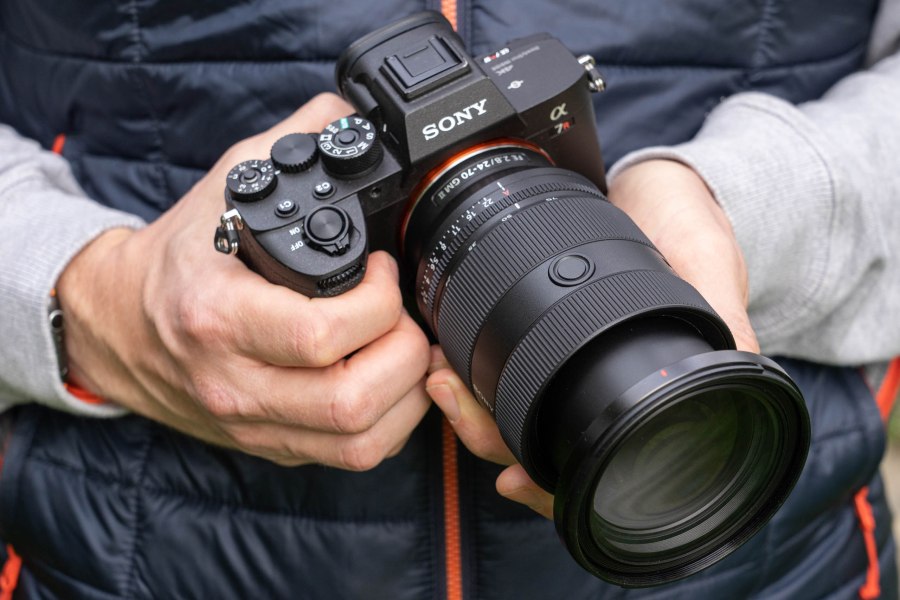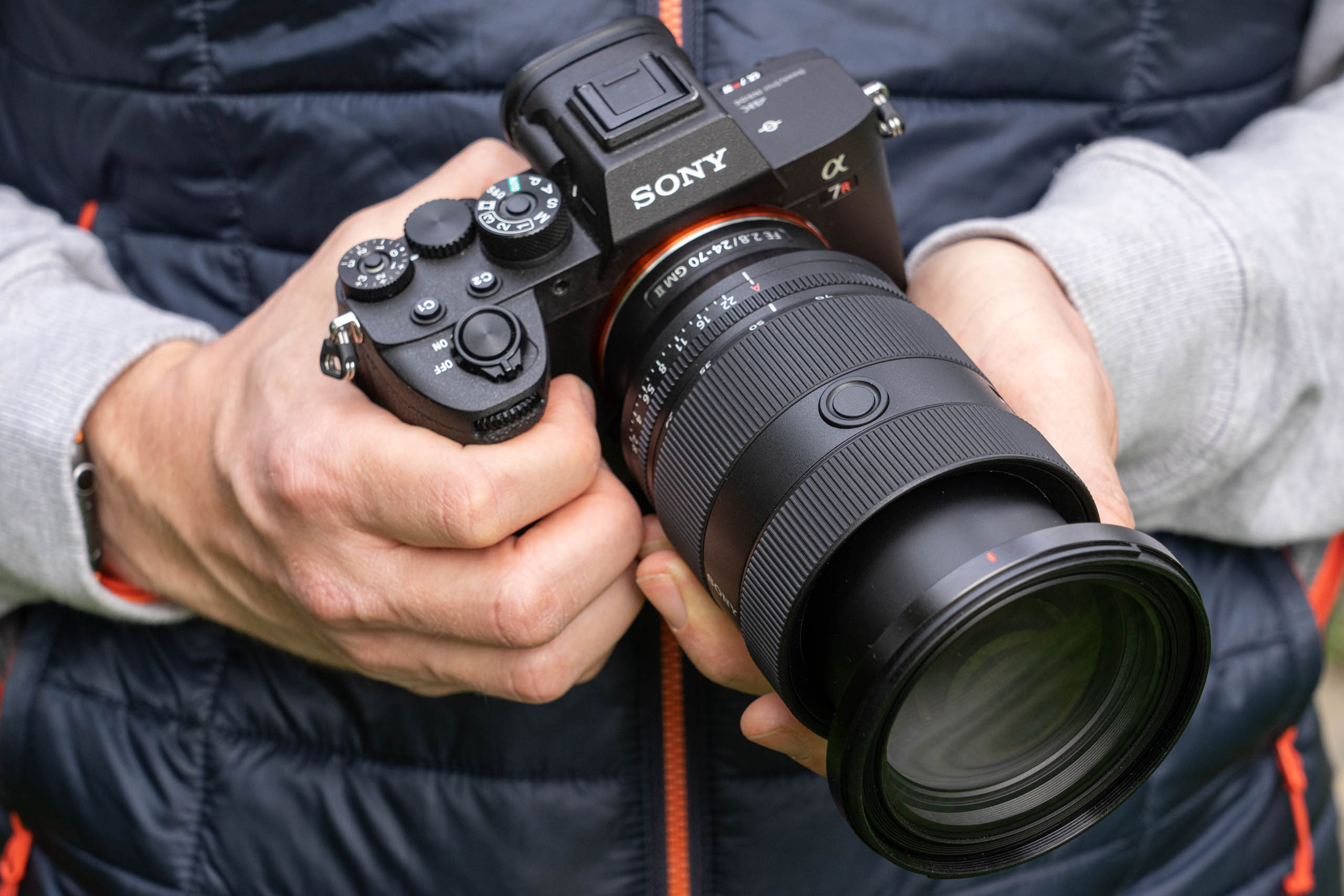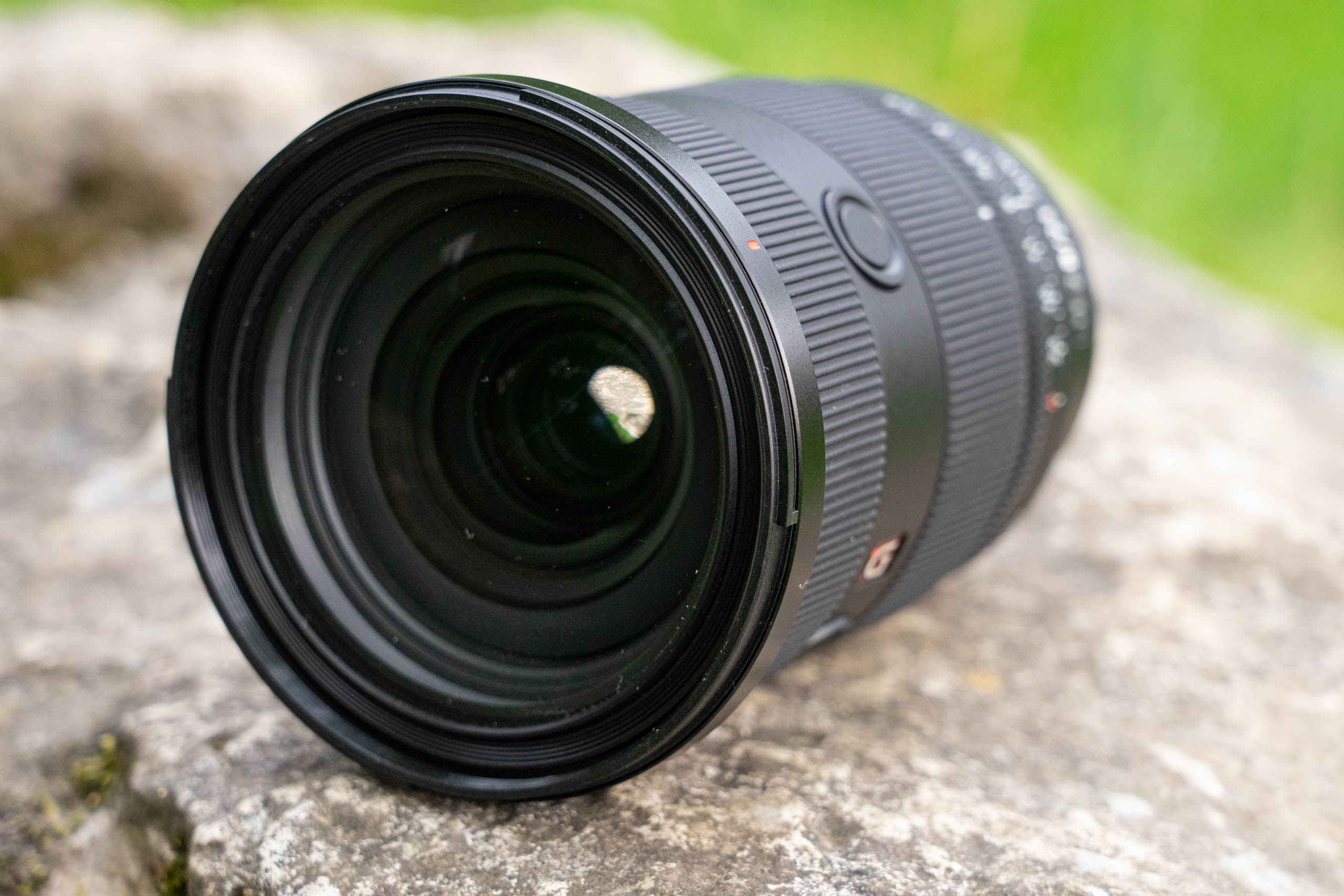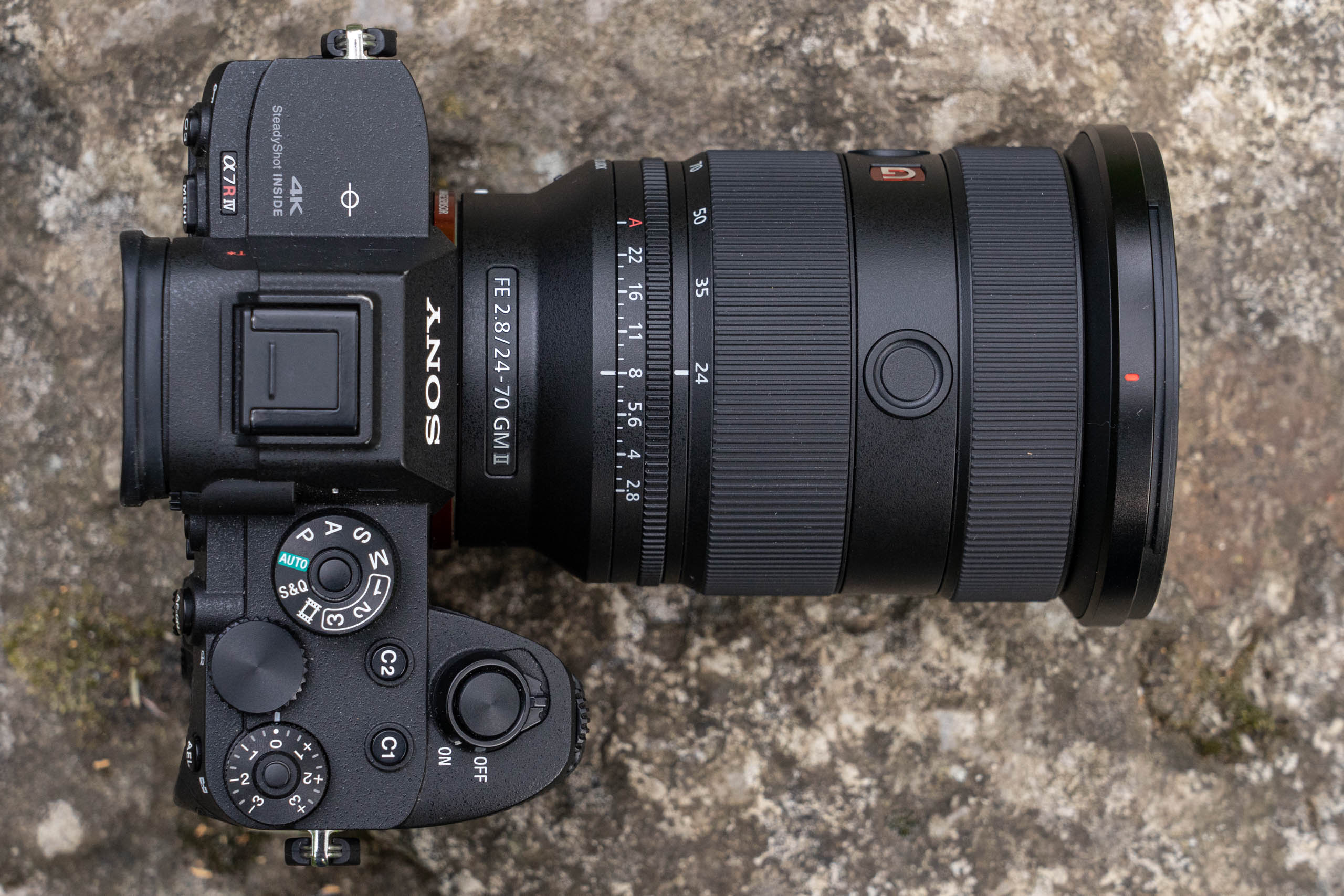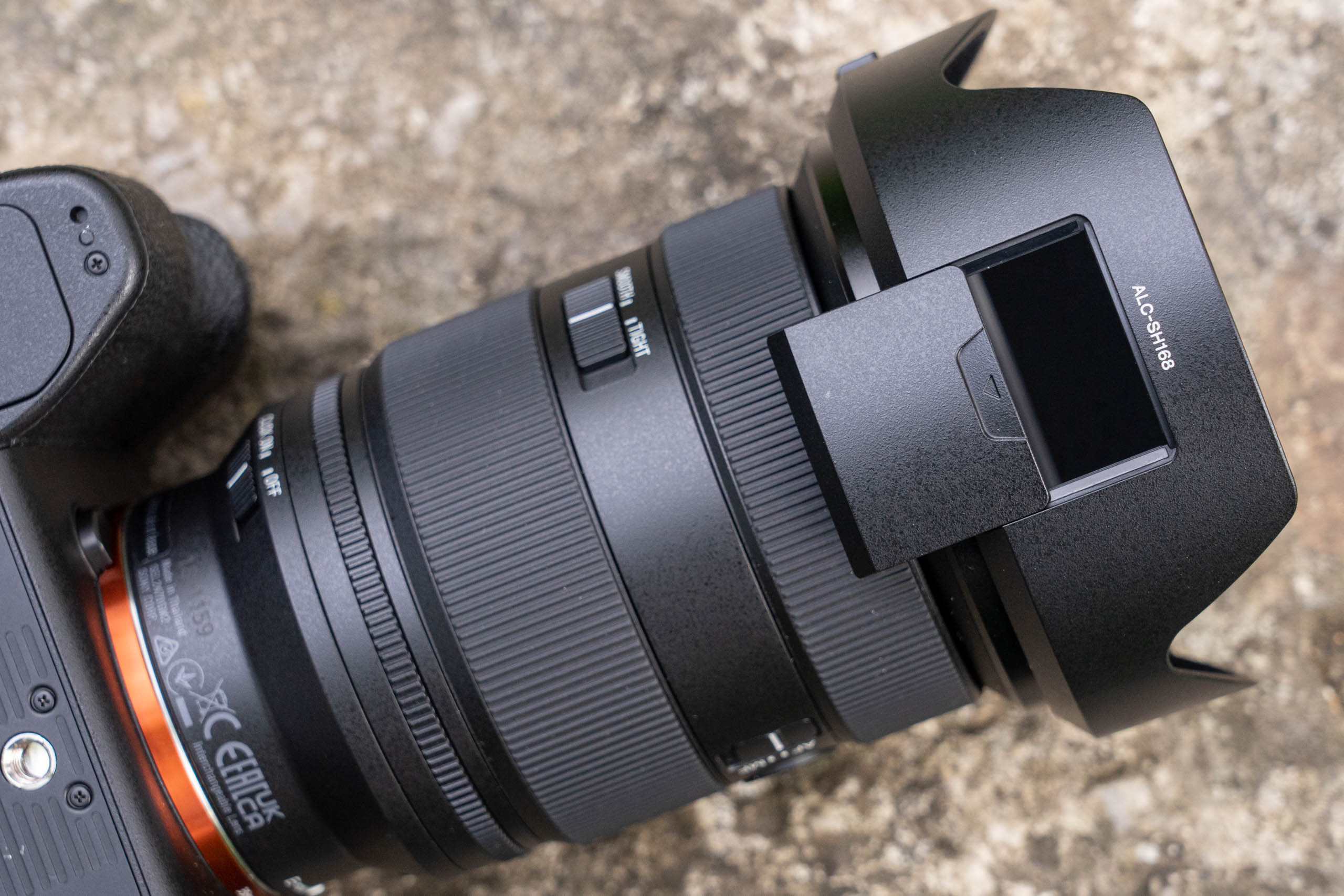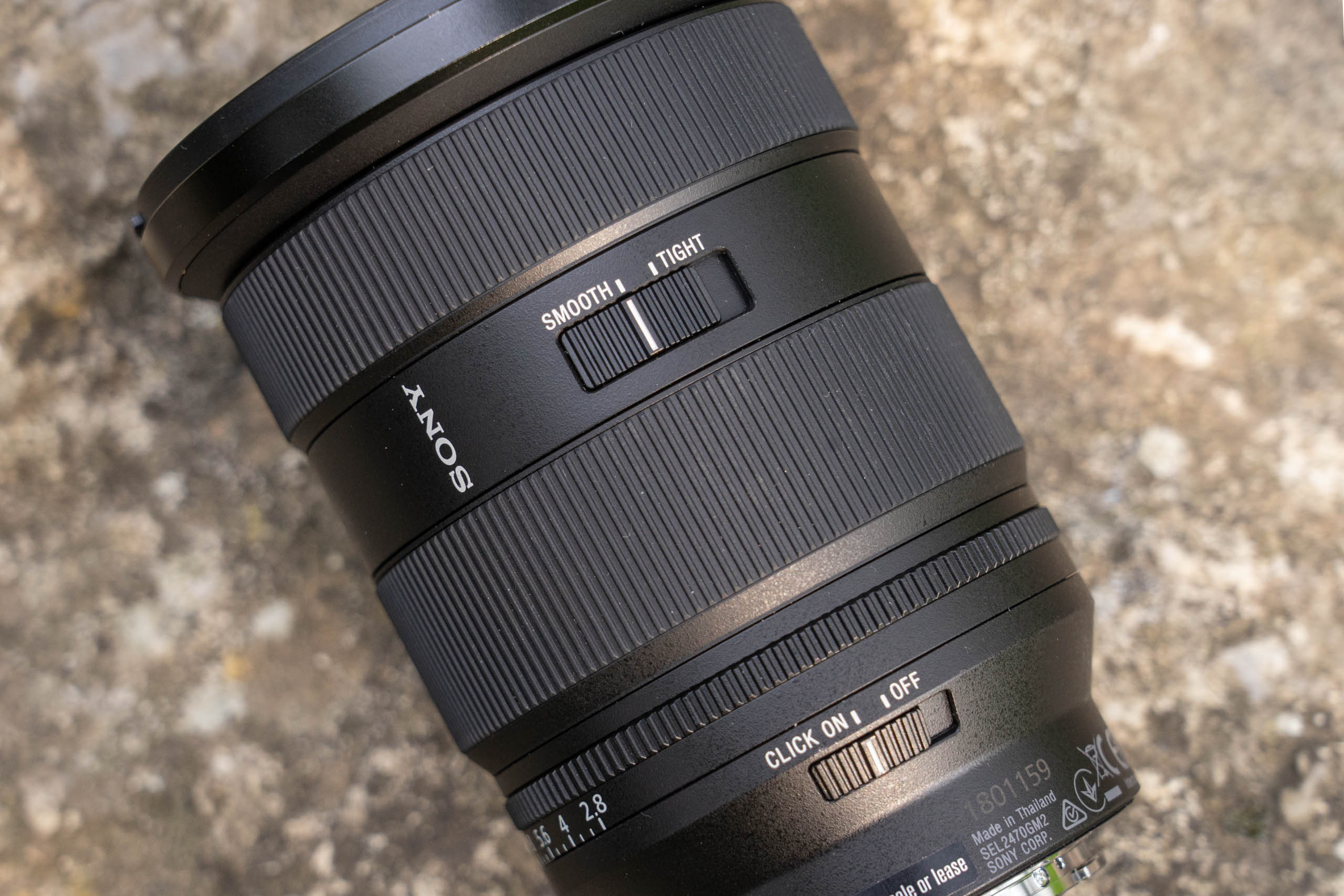Sony FE 24-70mm F2.8 GM II: At a glance
- $2,300 / £2,100
- For Sony full-frame mirrorless cameras
- Gains aperture ring and zoom torque control
- Takes 82mm filters
- 119.9mm length x 87.8mm diameter
- Weighs just 695g
As I opened the box and saw the new Sony FE 24-70mm F2.8 G Master II, l thought Sony had sent me the wrong lens. On paper, the difference in size between this new $2,300 / £2100 pro-spec standard zoom and its predecessor doesn’t sound like a considerable amount, but when you get it in hand, it is a different story.
Since Sony released the original FE 24-70mm F2.8 GM lens in 2016, photographers’ and videographers’ needs have changed. With Sony’s professional telephoto lens line-up having grown in the last few years, the focus seems to have shifted back to the ‘smaller and lighter’ promise we were initially sold. Except in 2022, these smaller, lighter lenses aren’t just happening with an f/4 aperture, but mow include fully-fledged f/2.8 versions.
The new FE 24-70mm F2.8 GM II lens promises the exceptional image quality that we have grown to expect from G Master lenses. However, its size makes it perfect for cameras such as the Alpha 7C, or for videographers to use on a gimbal.
Sony claims that it is, in fact, the smallest and lightest 24-70mm f/2.8 lens for any full-frame camera system, and my quick check of Canon, Nikon, Panasonic, Leica, Pentax, Sigma and Tamron lenses shows this to indeed be the case. But as we preach, lens design will always be a compromise, so what are the compromises with this new lens?
Sony FE 24-70mm F2.8 GM II: Features
Before we delve deeper, let’s tick off some basics. The FE 24-70mm F2.8 GM II creates an image circle covering a full-frame sensor, but it can be mounted to any Sony E mount camera. If you want to use it in APS-C mode or on a Sony camera with an APS-C size sensor, it becomes the equivalent of a 35-105mm lens (see our full guide to the best Sony cameras here)

The Sony FE 24-70mm F2.8 GM II is designed for use on full-frame mirrorless cameras such as the Sony A7R IV
Eagle-eyed acronym spotters may have already noticed that this is not designated as an OSS (Optical Steady Shot) lens, and neither was its predecessor. But as Sony’s full-frame cameras have included in-body image stabilization since the second-generation A7 II in 2014, this shouldn’t be an issue for most users. It is also one way to keep the lens design’s size, weight, and complexity to a minimum.
There is a flurry of other acronyms to get your head around in the lens’s specification with it featuring three aspherical elements, two ED (Extra-low Dispersion) elements, two XA (Extra Aspherical) elements and two Super ED (Super Extra-Low Dispersion) elements. Those lenses help to keep chromatic aberration, astigmatism and coma in check while making sure detail isn’t distorted at the edges; in total, the lens is constructed of 20 elements in 15 groups. But the acronyms don’t stop at the glass!
The lens has four XD (Extreme Dynamic… OK, technically not an acronym) Linear Motors for autofocus. All you need to know here is that they can shunt back and forth extremely quickly and accurately, which should enable the lens to focus smoothly, speedily and accurately, something that should prove as enticing for videographers as it is for photographers.
And finally, there is the headline feature, which is the size and weight. It weighs just 695g, compared to the 886g of its predecessor. In comparison, the Nikkor Z 24-70mm f/2.8 S, which was until now the lightest lens in this class, weighs 805g. Meanwhile Canon’s RF 24-70mm F2.8 L IS USM weighs 900g but includes optical stabilization, while Panasonic’s Lumix S Pro 24-70mm F2.8 is 935g. The only third-party alternative available to Sony users, the Sigma 24-70mm F2.8 DG DN Art, weighs in at 835g.
In terms of size, the new optic measures 119.9mm long with a diameter of 87.8mm, which is 16.1mm shorter than its predecessor. Without detailing all of the competitor lens measurements, the Canon RF 24-70mm f/2.8 L IS USM is the closest in size, measuring 125.7mm with a diameter of 88.5mm. Again, the size differences don’t sound like a lot written down, but are very noticeable in-hand.
For videographers the size and weight will be useful when using the lens on gimbal. Though the lens does extend, as most 24-70mm zoom lenses do, so it will require balancing careful at the different focal lengths; the size and weight should make this easier though. Videographers will also be pleased to hear that the lens displays minimal focus breathing, which means racking focus between two points won’t create a slightly zoomed in or out effect.
A petal-shaped, bayonet fit lens hood is supplied, complete with locking button and a felt lining to minimise any risk of stray light being reflected into the lens. It includes a sliding door that gives access to polarising or variable ND filters, allowing easy adjustment. This doesn’t slide out completely, so it shouldn’t get lost.
Sony FE 24-70mm F2.8 GM II: Build and Handling
The body of the lens has all the hallmarks of a Sony G Master lens. It is constructed of metal and what Sony describes as ‘engineering plastic’, which used to be called polycarbonate, and before that was just known simply as plastic. The aperture ring can be switched to click at 0.3EV intervals, or it can be set to provide smooth control that videographers can use to change exposure moving between scenes. A switch can also lock the aperture ring either in, or out of, its A position, which switches aperture control from the lens to the camera.
There are two buttons on the lens barrel that are set to provide Focus Hold but can be changed in-camera to activate AF or any other number of custom settings. Switching between Manual and Autofocus can be done via a switch on the barrel, and there is one final switch – zoom smoothness.
This control switches the zoom ring’s torque between Smooth and Light, with Smooth providing a little more resistance and Light needing less force to turn. Photographers will benefit from being able to zoom quickly using the Light setting. The firmer option may be preferable for videographers. It also prevents lens creep when carrying the lens, without being a full lock that you need to remember to disengage every time you use the lens.
The lens is weather sealed with silicone gaskets and rubber seals to prevent dust and moisture ingress. The front element is also fluorine coated, which helps to repel water and anything else that may find itself on the element, making it easier to clean.
Sony FE 24-70mm F2.8 GM II: Autofocus
With somewhat limited time with the lens, I couldn’t test the autofocus speed to its full potential. However, what I can say is that I didn’t have any issues with the lens’s response in the situations I did use it in, which included using Eye AF and Face Tracking to keep up with the speed of a child playing. Equally skittish was a squirrel that I was photographing, with the Sony A7R IV and lens keeping up with it as it decided whether to approach me in the hope of food or run away in fear that it may become food (see our guide to wildlife and animal photography)

Sony Alpha 7R IV, Sony FE 24-70mmm F2.8 GM II at 70mm, 1/4000sec at f/5.6, ISO 1600 © Richard Sibley
Sony claims that the lens can focus at speeds of up to 30fps, making it OK to use for shooting some sports events with the Sony Alpha 1 – which is something that I hope to try soon.
Whilst discussing focusing, it is worth noting that the minimum focus distance is an impressive 21cm at 24mm and 30cm at 70mm. When you take into account the length of the lens, you end up with a working distance just a few cm away from the subject. It makes this an excellent lens for close-up images and product shots, which is another string to its bow.
Sony FE 24-70mm F2.8 GM II: Image Quality
While the optical arrangement of the FE 24-70mm F2.8 GM II benefits from the advancements in lens fabrication in recent years, there will always be some computational work at play. The most obvious place where this can be seen with the new lens is when you switch off the curvilinear distortion compensation in the camera. Barrel distortion is present at 24mm along with pincushion at the 70mm setting.
A very non-scientific ‘photograph a brick wall’ test revealed that at 24mm, a +6 correction is needed in Adobe Camera Raw, whilst a -6 correction does the job at 70mm. At the time of writing, Adobe Camera Raw couldn’t apply an automatic correction profile. With the in-camera correction switched on, there was no discernible curvilinear distortion at either end of the zoom, and quite honestly, there is no reason to shoot with the setting turned off.
Chromatic aberration is a similar story. With the chromatic aberration correction switched off in-camera and the 60.2-million-pixel images zoomed to 200% magnification, I could see slight chromatic aberration on high contrast edges. For my test shots, I shot at 24mm at f/2.8 and did the usual trick of shooting up through tree branches against a bright overcast sky. Again, the chromatic aberration disappeared with the correction turned on, though if you want to get picky, zooming to 800% did reveal a little magenta fringing. Nothing was discernible at a standard 100% magnification.
When shooting a close-up image of a bright white daisy, I did notice some cyan/red longitudinal chromatic aberration either side of bright out-of-focus edges of the petals. Stopping down the aperture resolves this, by bringing these edges more in to focus. This isn’t unusual and can be seen with most 24-70mm f/2.8 lenses when shooting this kind of subject. Again, it shouldn’t be noticeable in most scenarios, but is visible when viewing A7R IV images at 100%.
Specular highlights are rendered as virtually perfect circles thanks to the 11-blade aperture, and there is just the merest hint of ‘onion skinning’ halo around the edge. Again, the A7R IV images zoomed to 100% reveal these minor imperfections; on other cameras in the range, you are unlikely to notice these without enlarging an image to its maximum and inspecting it.
And so on to sharpness, where I have to say that the lens is pretty outstanding. I would happily shoot all day with the lens wide-open at f/2.8, both at 24mm and 70mm. At 24mm, details on the surface of a boat I was photographing were revealed – knots in the wood, scratches in the hull – all of which that were just a tiny fraction of the overall image captured by the A7R IV. Naturally, stop down, and everything gets even crisper. A shot of a squirrel at 70mm f/5.6 (see Autofocus section above) allowed me to see every strand of fur within the depth of field. I could count them if had the time and inclination.
Shooting at f/8 at 24mm and a shutter speed of 1/13th sec, I could easily pick out individual leaves and detail on tree bark in a busy spring woodland scene. What’s more, I could see these details from corner to corner in the frame. A shot at 37mm f/8 looking down on a flower bed allowed me to see all of the hundreds of tiny petals, and they were just as sharp in the corners as they were in the centre. The drop off in definition between centre and corner is very slight in real-world images.
At f/16, when shooting at 24mm or 70mm, there is still a staggering amount of detail that the A7R IV can resolve. By f/22, diffraction is starting to have an effect, but I would hazard that most photographers would happily accept this for the increase in depth-of-field, where needed.
Sadly, we couldn’t shoot side-by-side with a copy of the original FE 24-70mm F2.8 GM lens, but my experience is that the image quality is comparable, if not better. Sony claims that the sharpness is comparable to some fixed focal length lenses, and from what I have seen, this is absolutely true.
Sony FE 24-70mm F2.8 GM II: Our Verdict
A 24-70mm f/2.8 will always be one of most popular lenses produced for any lens mount. It forms the staple of many kits for professionals, while for enthusiasts, it may well be the only lens they ever buy. It is an investment and a worry when a new lens promises to be smaller and lighter. As we know, thanks to the laws of physics, there are often compromises to get the lens there.
Mirrorless cameras promised that we would have smaller and lighter lenses. Where chromatic aberrations, curvilinear distortions and vignetting were the foe of film shooters, the computational power of digital cameras can swipe them away. Combined with leaps in lens technology, this allows us to have impressive lenses in smaller and lighter shells than before. Purists might not like the fact that cameras now do some of the heavy lifting, but photographers make a living based on the results and not by analysing the raw optical performance.
So, the Sony FE 24-70mm F2.8 GM II is a great lens. If size and weight matter to you, it is worth consideration over its predecessor. It could genuinely replace some prime lenses if larger f/1.4 or f/1.8 apertures aren’t essential for you – it is simply that good in detail resolution, in both the centre and the edges.


